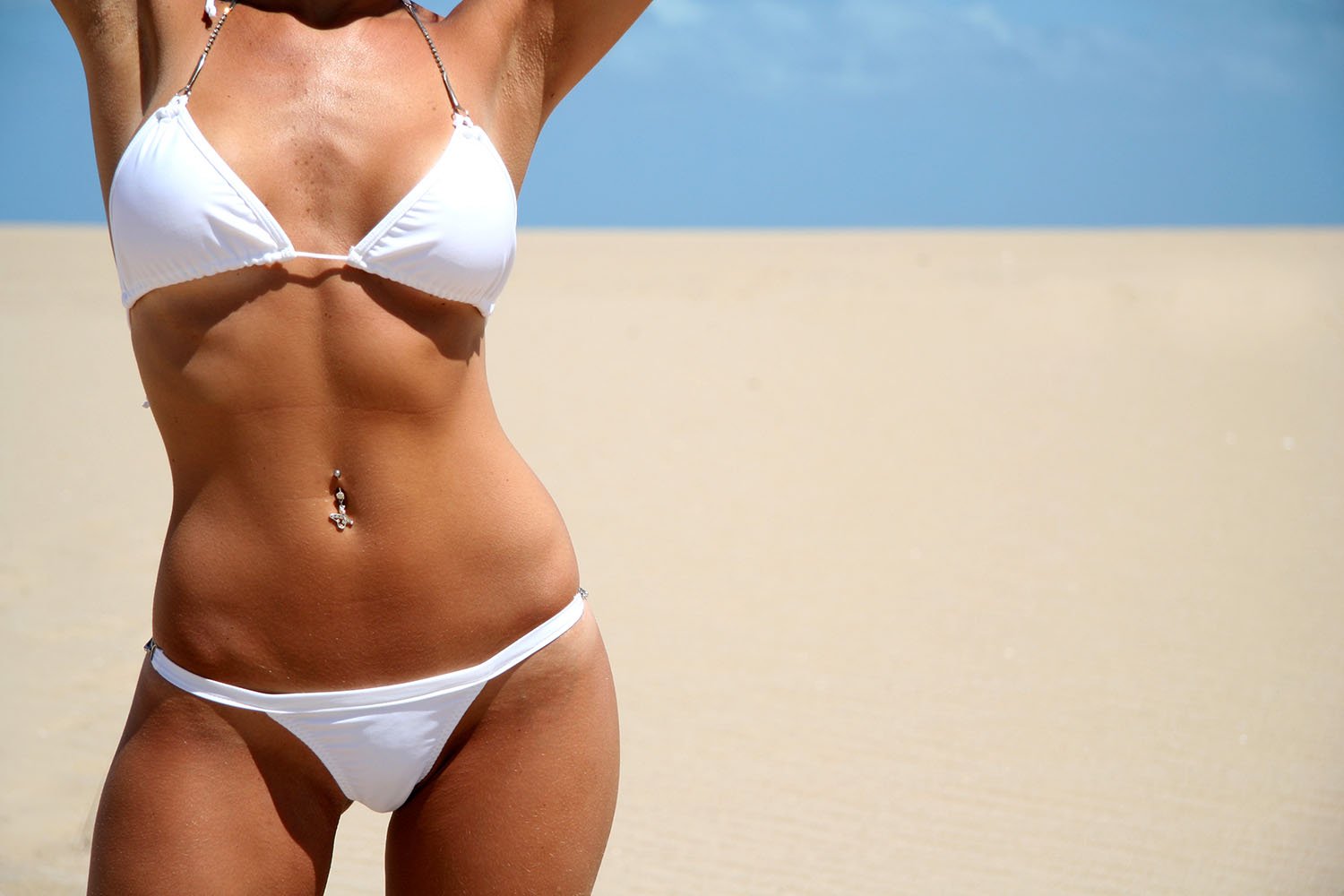Glycation is one of the main aspects and causes of cellulite and skin ageing. Glycation is caused when sugars bond with collagens (there are 28 types of collagen in the human body). The end results of sugar-collagen bonding are called advanced glycation-end products (AGEs).
What foods cause cellulite on legs? Do carbs / fat / sugar / dairy / sugar cause cellulite?
The ultimate anti-cellulite drinks (II): vegetable juices and berry smoothies
Vegetable juices/smoothies and berry smoothies contain highly concentrated collagen-protecting, blood vessel-supporting, fat-fighting polyphenols and carotenoids (plus vitamins, of course) and negligible calories. Concentrated polyphenols and carotenoids, both found in vegetable juices and smoothies, are known for their anti-inflammatory, anti-glycation…
Do cellulite creams get absorbed?
Madecassoside from gotu kola may help reduce visceral fat and cellulite
Centella asiatica (gotu kola) exerts multiple actions against cellulite and its concentrated extract, comprising asiatic acid, asiaticoside, madecassic acid, madecassoside, is the most important anti-cellulite herbal extract known. Previously asiatic acid was shown to specifically exert anti-obesity activity and now new research shows that madecassoside may also do the same…
Dancing, cellulite and skin firmness
Physical activity and exercise are essential for both cellulite reduction and skin tightening. Diet only is never enough - both physical activity and healthy nutrition are needed. The most beneficial types of exercise / physical activity for cellulite prevention and skin firmness maintenance are the ones which combine both high intensity AND some form of vibration/impact. High intensity burns calories while the activity is…
How glycation causes cellulite (and skin aging)
Glycation is the attachment of sugars to proteins and lipids, leading to what are called ‘Advanced Glycation End-products’ (AGEs in shirt). The consequent damage of those proteins/lipids, especially collagen and elastin, leads to inflammation, free radical formation / oxidative damage and fibrosis, all of which accelerate aging…
Hypermobility, skin looseness and cellulite
Hypermobility is a broad term to describe loose connective tissue which is characterised by weaker/less collagen. This results not only in loose joints but also in loose, thin skin. So hypermobile / very flexible people tend to suffer from skin laxity from young age but especially so from their 40s and 50s, when collagen production decreases. Females suffer more from hypermobility, due to to the action of estrogen on connective tissue. Hypermobility in females increases just before their period and also in the latter…
Bread and cellulite
Most people quite rightly understand that too much bread will tend to increase cellulite. But why is that? There are four ways in which eating bread can increase cellulite. Calories: bread consists mainly of starch, which contains 4 calories per gram (kcal/g); too many calories mean more fat accumulation and cellulite. Glycaemic index: glycaemic…
Coffee scrub for cellulite: facts vs myth
One of the biggest beauty fads in the last few years is the scrubbing of ground coffee beans on your skin in the hope that it will smoothen up your cellulite and firm up your legs. Although it intuitively doesn’t make sense, this hasn’t stopped 3 million web pages, according to Google, to be created on the subject…
Coconut oil for cellulite: does it help?
Does coconut oil get rid of cellulite? Best virgin coconut oil for cellulite? Before anything else, let’s make it abundantly clear that nothing gets rid of cellulite. Although used liberally, the term “get rid of cellulite” means nothing for 90% of women with cellulite, because in 90% of cases cellulite cannot be “rid of”, it can only be reduced…
Are diet and and exercise enough for cellulite reduction?
Healthy nutrition and exercise are indeed absolutely essential for cellulite prevention, as inactivity and unhealthy diet/nutrition are major causes of cellulite. Furthermore, healthy nutrition and exercise are also 100% essential for cellulite reduction, as you cannot improve something without stopping the habits that originally led to its creation…
Why do teenagers have cellulite?
You may have noticed in the swimming pool, at the beach, at the gym etc, that some young women, even from the age of 13-14 have cellulite? How can this be possible, you might wonder? There are multiple factors that cause cellulite in general, and most of them also play a role in teenage cellulite. Let’s have a look.
Do men care about cellulite?
This is a common question from my clients: “Do guys care about cellulite in women?”
Personally, I do not care much, as I know that it is a common problem. Yes, no cellulite is better, like no beer belly in a man is better, but I would not judge a woman by the amount of her cellulite, as I would not judge a man by his lack of a six-pack. And that applies to…
Why do older women have more cellulite?
Although cellulite can start at quite young age - almost as soon as the onset of puberty at around 13 - it is more prevalent at older ages, and its appearance also worsens with age. At our clinic we see more and more clients as age progresses up to the age of about 65 when interest in cellulite reduction declines, for different reasons, even though it becomes more progressed. There are two main reasons why cellulite becomes more common / more severe with age…
Can I shower/bath after RF or cavitation treatment?
Cavitation treatments are generally very safe and have a low rate of adverse reactions that would potentially prevent you from having a bath or shower. Usually the only problem experienced after cavitation treatments is mild redness / skin sensitivity, which dissipates within a few minutes or hours. As long as skin does not look/feel irritated, then you can have a normal - but not too…
Why did I lose facial fat with HIFU / RF microneedling? They told me they would just target the SMAS to “lift” my face…
Everyone interested in facial anti-ageing these days is talking about the SMAS. Suddenly everyone is an (ignorant) “expert” in the SMAS, just like everyone interested in cellulite or massage suddenly became an (ignorant) “expert” in all things fascia a few years ago. But what is the SMAS, why is everyone talking about it and why is it not such a great idea to target it non-surgically?
Skin looseness in slim women
Skin looseness in slim women occurs mainly due to two factors. Genetics: Tall, slim people in general tend to have more loose connective tissue. This means better flexibility but also more skin looseness. In the younger years this connective tissue looseness goes unnoticed. But as we get older, and collagen levels start to decline, skin laxity becomes more obvious. Strict dieting or…
Does fibrosis always occur after lipo?
Fibrosis (i.e. internal scar tissue) is the result of inflammation. Not all Inflammation results in fibrosis, but quite often it does. Fibrosis after liposuction surgery can happen as a result of: Mechanical trauma, i.e. the movement of the liposuction cannula under the skin. This usually manifests as fibrous nodules (i.e. bumps / hard lumps) or occasional adhesions (skin stuck to underlying tissues and inhibiting movement / causing pain during movement). This kind of fibrosis is inadvertent…
Lipolysis vs adipolysis: what is the difference?
You may have seen the terms adipolysis and lipolysis in marketing blurb of different cellulite / fat reduction treatments or even in scientific literature. And you may have correctly got the general impression that they both mean fat loss. But if they both mean fat reduction, why the two different words? The answer is: because those two words mean actually two different things.





























![How to get rid of cellulite | 111 tips from the experts [2024 update]](https://images.squarespace-cdn.com/content/v1/5294cad9e4b009e918124a61/1582205124442-U31A5ECGNCG62VFPPJWJ/How+to+get+rid+of+cellulite+in+2020.jpg)

